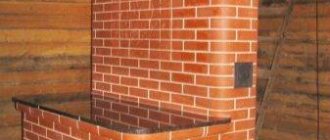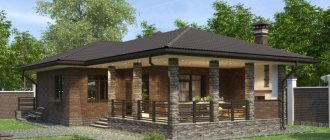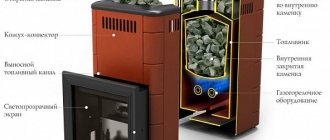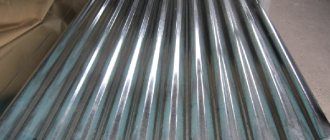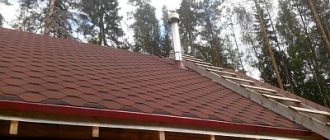What could be better than a good steam bath or sauna? Here you can fully relax, relax and forget about your problems. The central place in any steam room is occupied by a stove, and not a simple one, but one that meets the following requirements:
- fire safety;
- quick heating of the bath;
- efficiency;
- adjustable temperature;
- long service life;
- ease of use;
- correspondence between the size of the room and the dimensions of the device;
- health safety;
- aesthetics.
Bath heating devices come in several types: heater stoves, steam generators made of brick or metal alloys, and equipment with a fireplace. The latter are considered the most modern models. They can be purchased in specialized stores or made with your own hands.
Such designs will be of interest to those who like to sit near the fireplace after bathing procedures. The glass ceramic door is an important part of this unit. It gives a conventional heating device all the properties of a fireplace. Thanks to the fireproof glass door (we wrote about the characteristics of heat-resistant material earlier), you can watch the fire burning in the fireplace. Such units are quite popular and are in great demand.
For a steam room, a fireplace stove is a combination of practicality, functionality and economy. It provides the desired temperature and a lot of pleasant warming steam in the bathhouse and serves as a fireplace in the dressing room.
Fireplace in a bathhouse: what is it and why is it needed?
Well, it’s quite easy to imagine a bathhouse and a fireplace separately. Together, they mean that a stove designed to heat a steam room and create the conditions of your favorite type of bath can, among other things, also be a decoration. To do this, it is enough to abandon the solid metal door to the firebox and replace it with glass.
Video on topic
This is how it might look with a metal stove and a firebox with a fireplace door placed in the rest room, you get a fireplace in a bathhouse:
https://youtu.be/OfH_e4ER6VE
As for such a door, it is a metal frame into which a single or double glazing unit with special heat-resistant glass . The frame can be made of either steel or cast iron . If desired, you can supplement it with forged elements.
However, you should not consider a sauna fireplace stove solely as a decorative element. The practical use of a transparent door is the ability to visually monitor the combustion process.
In addition, the door limits convection from the side of the firebox, preventing heat from escaping with air currents. At the same time, it prevents sparks from entering the room, which increases fire safety . Along with sparks, smoke and soot cannot penetrate.
As an option, you can consider having two heaters in the bathhouse at the same time - a stove in the steam room and a separate fireplace in the relaxation room. This is cost-effective for large baths.
Design and construction
The design of a sauna stove-fireplace is not relevant for purchased fireplaces, which mostly already have cladding; the portals are presented in the form of a cast iron or steel structure. If you assembled a brick sauna stove with your own hands, it can be lined and decorated with any materials that need to be renewed as they wear out.
Finishing can be done in one of the following ways:
- Traditional and ancient fireplace cladding using the peasant method involves applying a mortar containing whitewash, lime and clay to the brickwork and surface. After the solution has completely dried, such a surface can be painted, but this option requires artistic skills, which is why it is used quite rarely;
- Another option is to cover the fireplace with decorative bricks, which are affordable and allow you to imitate any surface;
- To finish the brick surface of the fireplace stove, you can use such heat-resistant ceramics as: porcelain stoneware, majolica or terracotta;
- Tiled fireplaces are very popular, on the surface of which such voluminous, massive and quite heavy tiles are fixed, having a unique color and style.
Today, you can assemble a brick sauna stove with your own hands even without the proper skills, but for these purposes you will need a competent diagram or order, for example, from a master like Kuznetsova; the gases produced in such heating units flow naturally, and not due to the existing hood.
Kuznetsov furnaces have the following advantages:
- The oven heats up completely and gradually, starting from the bottom and slowly moving to the top;
- Due to their design features, the masonry of such stoves is not prone to destruction, deformation and cracks;
- Such units are capable of operating both the stove and fireplace separately, and together;
- Gases escaping from the firebox additionally heat the side walls of the fireplace stove;
- Soot and soot are formed in minimal quantities during equipment operation, which greatly facilitates cleaning and maintenance.
Without a stove, there will be no point in having a bathhouse, be it Russian, Finnish or any other, since it is this structural element that is responsible for heating and the atmosphere in the steam room, and even modern electric infrared fireboxes cannot compare with traditional wood-burning sauna stoves.
You can install a sauna stove with light weight and dimensions not only on the first, but also on the second floor of the house, however, during any construction with your own hands, you need to carry out a thorough and detailed design, draw up a project order, calculate and select the right materials, learn how to use a trowel , masonry mortar, level, grater, determine the most suitable place and method of placing the stove in the room.
Since brick sauna stoves have a lot of weight, more than 400 kilograms, before construction, it is necessary to pour a high-quality base or, in other words, a foundation under them. The depth of the pit will be about half a meter, after which crushed stone is laid on the bottom, which, if necessary, can be replaced with construction waste, filled with cement and supplemented with reinforcement - this will create a strong and solid foundation.
You can start building a sauna stove only after the foundation is completely dry; this will take up to 20 days; in order not to waste time, you can purchase all the materials, tools and fittings necessary for construction in a few weeks.
After the foundation has completely dried, two sheets of roofing material are laid on it and pressed with a layer of cement. Further, if you are going to install a purchased fireplace, you can decorate this area with stone or tiles, but if you are building a brick unit, you will not need decor and you can immediately begin installation.
For masonry, you need to choose a stove-fired refractory brick, and also observe the thickness of the seams between the bricks and rows, which ideally will be 3-4 millimeters. Each row is first laid out dry, and after laying on the mortar, the evenness is checked with a building level and plumb line, which will allow you to build a brick sauna stove with your own hands and in a short time.
Stove-fireplace for a bath: selection criteria
Let's dot the I's right away. No one chooses a stove for a bath based on the beauty of the fireplace insert.
IMPORTANT! First of all, you should focus on the correspondence between the type of stove and your favorite steaming modes : is it a sauna or a Russian bath.
The second equally important criterion is the correspondence of the furnace power to the volume of the steam room.
The third criterion is the type of fuel. And here it turns out that the aesthetic pleasure of contemplating burning wood in the fireplace may well outweigh the rational desire to minimize labor costs for worrying about fuel. There will be much more fuss than with gas, and even more so with electricity. But the fire in the stove looks so cool! And everyone in the kitchen has already seen enough of a gas burner for a long time). Other pros and cons of sauna stoves powered by wood, electricity and gas are presented in the relevant articles.
Our website has very informative articles covering every nuance of choosing a stove depending on the selected bath mode and other circumstances. We don’t want to repeat ourselves, so we recommend going through the articles.
- Features of stoves for Russian baths;
- The best stoves for a Russian bath;
- Types of stoves for steam rooms: wood, gas, electricity;
- Wood-burning sauna stoves,
- gas
- and electrical.
A couple of specific questions remain regarding the fireplace insert specifically. Let's start with the fact that it is most often made external - few people want to admire the flames in the steam room. But from the rest room or (if there is none) from the dressing room is a completely different matter. The question of which room the stove is fired from is automatically resolved.
Wood-burning sauna stoves
Further clarifications concern glass.
Screen size"
If you compare a fireplace with a TV, the first thing you notice is its diagonal. Fireboxes with transparent doors can be standard , that is, they do not differ in size from solid metal ones, but there are also fireplace stoves for baths with large glass . The latter is usually given as a modification to a specific oven model. In other words, the choice is limited to what the stove manufacturer has. Those who have decided on a model should check whether it can be equipped with a large format fireplace door.
BY THE WAY! But if the stove is made of brick, then the size of the fireplace portal depends entirely on the taste of the owner. You can make a door of any shape and size. Including double doors.
Types of glass
Not all glass is suitable for a fireplace in a bathhouse - even if you install ordinary heat-resistant glass, it will not withstand the heat of the firebox. quartz glass or borosilicate ceramics are placed there . Below we will discuss this in detail. For now, it’s enough to focus on the price.
Take into account! Borosilicates are cheaper than quartz glass and are somewhat inferior to it in terms of strength characteristics.
Fuel types
It is necessary to pay attention to what flammable substance is used to fire the device. This affects both the price of the unit and its appearance. Depending on the energy source, bath heating devices are of the following types:
- Wood-burning . The wood burning stove is a classic. This type of fuel was used several centuries ago, and to this day timber products do not lose their relevance. This method of heating a bathhouse is quite functional, because the room warms up very quickly - within an hour. A wood stove consumes little energy, but provides heating for a room with an area of 4 to 50 m². The disadvantage of the unit is the need for constant cleaning of accumulated coal and ash.
- Gas. These are convenient and economical devices. They do not require constant fueling and cleaning, since their design provides automated control. This type of stove also allows you to enjoy a burning fireplace, creating the effect of a real flame. But it is not always possible to install such a device in a bathhouse, since it requires from 1.5 to 4.5 m² of gas per hour. It is difficult to provide such a volume without a central gas supply system. This is especially true for country houses and dachas. The stove can be powered by a gas cylinder, which is unsafe, so it is recommended to choose a different device model.
- Electrical. Such a stove is considered a relatively expensive pleasure. Electricity consumption due to the increased load is quite high - up to 5 kW/hour to heat the air in a room of 50 m². However, this type of oven has certain advantages: convenience and safety of operation. At the same time, for the correct functioning of the device, you will need reliable wiring and a separate electrical panel.
More information about glass in a sauna stove-fireplace
All glasses are silicates in composition. However, the composition can vary , significantly affecting the mechanical properties of the glass. hardening , can affect strength and heat resistance .
Material and characteristics
Let's return to the two main categories of glass that are installed in fireplaces for baths.
Borosilicates
Silicon oxide is the main component of any glass . In addition to it, the composition usually includes soda and limestone . boron oxide is also added to them . Thanks to this additive, glass can withstand temperatures from -80 to 500 degrees.
On a note! Borosilicate begins to soften at 525 degrees.
In addition to temperature inertness, it also has chemical resistance. And yet you should not test it with hydrofluoric and phosphoric acids, as well as heated alkalis. Borosilicate is also resistant to sudden temperature changes.
By the way! Ordinary glass can burst under the influence of temperature, scattering into numerous fragments. Borosilicates do not break like that - they form large fragments without sharp edges.
Quartz glass
This variety can withstand even higher temperatures. It is made from pure quartz - in the form of sand, or the mineral rock crystal and vein quartz. Now the production of artificial silicon dioxide has also been established. The melting point of quartz is 1400 degrees .
Apart from silicon oxide, ordinary quartz glass contains no additives, which is the reason for its high heat resistance and chemical inertness. When the starting components are melted, either transparent glass or opaque glass . The only difference is the presence or absence of gas bubbles, from which the material becomes cloudy and becomes opaque. Of course, only clear glass is placed in a sauna stove with a fireplace.
Characteristics
When choosing glass for a fireplace stove in a bathhouse, the following matters:
- coefficient of thermal expansion . The lower it is, the better. It is especially low for pure quartz glass. Note that the next one depends on this parameter.
For your information! When heated, ordinary glass expands 30 times more than heat-resistant glass. This is a consequence of the presence of alkali metal oxides in it. Oxides of aluminum, boron and silicon, on the contrary, reduce expansion.
- heat resistance The limit to which the fireplace door can be heated without destroying it. A range of 500-550 degrees can be considered acceptable - the glass must withstand these temperatures for a long time . When you buy a stove or door, pay attention to the fact that with prolonged exposure to a higher temperature, the lifespan of the glass becomes significantly shorter. (The dates themselves are indicated in the passport). The manufacturer also indicates the maximum degrees for short-term exposure . Depending on the number of layers in the glass unit, this maximum can be 760 degrees or more than 1000 degrees .
IMPORTANT! In order not to expose the door to overheating, you must not overload the firebox with wood. Remember that a furnace operating at maximum risks not only glass, but also the metal of the body quickly turns into scale. You can also maintain the desired temperature using the draft - by increasing it, you reduce the heating of the door.
- glass thickness. This parameter is important from the point of view of greater or lesser fire hazard. Usually 4-5 mm is taken (this is quite enough), but it is possible to install thicker glass with an eye to greater resistance to flame.
Other characteristics are additional options. For example, glass color, lamination, relief, engraving.
Technologies and popular manufacturers
First, let's introduce an important distinction: tempered glass and heat-resistant glass are not the same thing. These are completely different technologies. In the first case, ordinary glass is taken and quickly heated by more than 600 degrees, after which it is just as quickly cooled by air on both sides.
This option is not suitable for a sauna stove-fireplace . Heat-resistant glass is glass with a certain composition, which was mentioned above. Moreover, the name “ glass ceramics ” is often applied to this variety.
The production of glass ceramics has its limitations. So you have to follow the rule about the impossibility of cutting, which is why the sheets are made in the size that will be used in the finished product.
Let's briefly go through the main technologies.
Lamination - the glass is covered with a protective layer, which, when the base is destroyed, does not allow the fragments to separate from the film.
Tinting is giving transparent glass certain shades. The meaning is mainly aesthetic, but they also say that tinting protects the eyes from excessive brightness.
Thermo-Rite
The most commonly used are warm shades - yellow, orange.
To combat soot that settles on the inner surface of the door, it was invented to apply a thin film of iron oxide, which leads to increased heating and automatic burning of soot.
Increasing strength is a task that has several solutions. There are technologies that use chemical reagents and surface polishing using open flame melting, which ideally smoothes out all possible flaws.
The products of certain manufacturers are most often found on our market:
- Schott Glas is the company that produces the Robax ;
- CrossFire Cerama is a borosilicate .
Installation and maintenance
- Since the door combines metal and glass, the coefficients of thermal expansion of both materials . a heat-resistant cord as a spacer between them .
Remedies for carbon deposits on stove glass
- It is also important to ensure that during installation the metal pressure on the glass is uniform over the entire joint area .
- Do not completely seal the seams , because this may cause the glass to crack.
- As for care, it should be recognized that even the most modern technologies do not eliminate soot on the surface. You'll have to fight on your own. On sale you will find special products to combat soot.
Danger! Do not use abrasives or aggressive cleaning agents under any circumstances . Abrasives leave scratches, and chemicals (for example, chlorine) are harmful not to the glass itself, but to the protective films on its surface.
Advice! If you don’t want to bother with cleaning a lot, choose drier firewood and non-coniferous wood .
Bathhouse with brick fireplace
It was already mentioned above that freedom in choosing the size and shape of the fireplace door is only possible if the stove is brick, where the portal is made to the taste of the customer. The latter also decides where the firebox will go - into the steam room or into the adjacent room. However, most often a fireplace insert is made precisely if it is located in the room adjacent to the steam room - the relaxation room or (in its absence) in the dressing room.
Stove-fireplace for a wood-burning sauna
Building a brick stove yourself is quite a difficult task. It’s easy to find the order on the Internet, but in order for the stove to fit specific conditions, you need to have experience as a stove maker. Therefore, we advise you to start with something simpler and cheaper . The fireplace door, by the way, is also not cheap, and it weighs a lot. Installing it requires skill, but during operation you will not notice much weight due to the convenient rotating mechanism (this applies to factory models).
Brick sauna stoves with a fireplace (photo source: Yandex)
Video on topic
Watch the video, which shows one of the possible solutions for a bathhouse with a fireplace, with a classic portal, shelf and clock above it. However, the size of the door is small and it is located asymmetrically - this slightly spoils the impression.
Main characteristics of the fireplace stove
In essence, a fireplace stove is a combined type sauna stove with a built-in fireplace portal. The portal can be open or closed by installing a glass-ceramic door. A similar design began to be used not so long ago, but it gained popularity due to its unique technical and external characteristics. Such stoves are heated from a dressing room or steam room.
In the first case, the firebox is mounted in such a way that, in addition to maintaining the optimal temperature in the steam room, visitors can comfortably spend time in front of the fireplace. It is believed that this type of design makes the rest of visitors more convenient and comfortable.
Placing the firebox inside the steam compartment does not allow it to be used as a fireplace hearth, since at high temperatures it is unlikely that you will be able to admire the blazing fire for a long time.
Sauna stove-fireplace: which manufacturer to buy from?
Let's return to the option of a purchased stove with a fireplace insert. Almost every large company that produces wood-burning sauna stoves offers customers modifications of models with a transparent fireplace door, for example, the cast-iron stove shown in the illustration from the Russian ]Vesuvius[/anchor].
Wood-burning metal sauna fireplaces, cast iron Vesuvius and others
In another article we have already reviewed various manufacturers of wood-burning stoves for baths; there is no point in repeating ourselves. If you find a stove to your liking, you will probably be able to equip it with a glass door. If you wish (in the same article), you can refer to the results of our survey , the rating of which is formed by readers like you. We are a non-sales information resource, so we stick to the facts.
Let's briefly look at several domestic manufacturers who definitely have the fireplace stoves we need for a wood-burning sauna.
"Feringer"
The company needs no introduction; many people know about such lines as “Steam”, “Classic”, “Malyutka” . All of them are suitable for both Russian and Finnish baths (of course, any metal stove is suitable for a sauna, but not every one is suitable for a Russian bath). Take a closer look at the Feringer models - maybe it will fit).
By the way! The firewood just needs to be well-dried - the stoves of this company do not have a grate , and you need to light the firewood from above, so you can only cope with the task with dry logs.
"Kutkin"
Another name familiar to many. High-quality stoves, however, are not inexpensive solutions. To reduce the cost , you can choose a model that can be tiled yourself. The fireplaces we are interested in in this article are available for each model. The company's stoves are suitable for Russian baths.
"Termofor" and "Teplodar"
Termofor and Teplodar are domestic manufacturers whose names are also well-known. Everyone has stoves with two modes, with closed heaters and, of course, with fireplaces. Check out their websites about the parameters of these ovens.
Actually, we mentioned only domestic companies , because their products are quite competitive and somehow more tailored to Russian realities. This does not mean that foreigners do worse, but we are full of people who like to take a steam bath “the Russian way,” and who better to know the national bathhouse than the Russians? And the prices are reasonable, despite the fact that many companies purchase stainless steel abroad.
Wood-burning metal sauna fireplaces “Vira” and “Vesuvius”
However, the decision is always yours, we only express our opinion.
Peculiarities
The fireplace stove is endowed with all the qualities of a sauna stove, so the same requirements are imposed on it. Compliance of the equipment ensures the comfort of operation of the structure, its reliability and durability.
Requirements for a fireplace stove.
- Safety during work. This is expressed in the fire-fighting mechanisms used.
- User protection. The operation of the structure must eliminate any risks, including burns, exhaust gases entering the room, and smoke.
- Adjustable temperature. Necessary to maintain comfortable conditions in the steam room.
- Compliance of dimensions and power with the parameters of the room.
- Easy to use with minimal action.
- High warm-up speed.
- Possibility of planning the amount of fuel consumed and the frequency of laying. This determines the cost-effectiveness of the installation.
- Long service life.
- Aesthetic appearance that allows the equipment to fit into the design of the room.
Rice. 2. Installation of a fireplace for a bath
The body of the product must have sufficiently reliable walls that can withstand regular exposure to high temperatures.
The functions of the fireplace expand the list of requirements with the convenience of viewing the fire in the firebox. For these purposes, a viewing window made of heat-resistant glass with thermal insulation functions is designed.
DIY sauna stove with fireplace
An alternative to buying a stove from a large manufacturer or ordering from a master is still to make it yourself . In principle, why not if you have the relevant experience?
For our part, we recommend that you pay attention to the so-called “Kuznetsov stoves” - these are bell-type stoves developed by Igor Kuznetsov for heating a house or bathhouse. There are varieties with fireplaces . The author’s website contains order diagrams and other useful information on how to install a fireplace stove for a bathhouse with your own hands.
Below we invite you to watch a couple of videos. The first is a decent educational film on how to install a Kuznetsov stove, but it is not for a bathhouse, although the principle does not change.
The second video is about how to make a fireplace for a wood-burning sauna; there is useful information about the nuances of masonry and other secrets of the stove maker’s skill:
***
Well, we hope that soon a fireplace stove will appear in your bathhouse, which will not only warm the steam room, but will also gather guests and household members in the relaxation room near the live fire.
